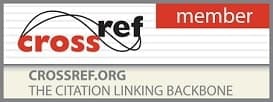- Printed Journal
- Indexed Journal
- Refereed Journal
- Peer Reviewed Journal
P-ISSN: 2394-1685 | E-ISSN: 2394-1693 | CODEN: IJPEJB
Impact Factor (RJIF): 5.38
2021, Vol. 8, Issue 1, Part A
Indicators of aerobic capacity
Author(s): Sarah Livingstone, Craig Mason, Shihfen Tu, Christopher Nightingale, Robert Lehnhard and Stephen Butterfield
Abstract:
Purpose: Secular trends related to height (plateauing) and weight (increasing) indicates a need for current data related to children’s aerobic capacity.
Methods: In the present study, biological indicators (age, sex, Body Mass Index, and maturation) of aerobic capacity were examined in children ages 6-16. All children were tested on the Progressive Aerobic Cardiovascular Endurance Run (PACER) during regular physical education class.
Results: Results indicate that body mass, age, sex and maturation all contributed to PACER performance and, thus, aerobic capacity. As hypothesized, chronological age was positively correlated with PACER score. In terms of sex differences, at age sixteen, both boys and girls recorded their highest respective mean PACER scores, with girls at 38.04, 20-meter lengths and boys achieving 65.43 lengths.
Conclusion: Regardless of sex differences, as BMI increased, PACER scores dropped. In the present study, maturation offset had a negative association with increasing age, but to a lesser extent in boys than girls.
Pages: 03-08 | 692 Views 208 Downloads
Download Full Article: Click Here

How to cite this article:
Sarah Livingstone, Craig Mason, Shihfen Tu, Christopher Nightingale, Robert Lehnhard, Stephen Butterfield. Indicators of aerobic capacity. Int J Phys Educ Sports Health 2021;8(1):03-08.








 Research Journals
Research Journals